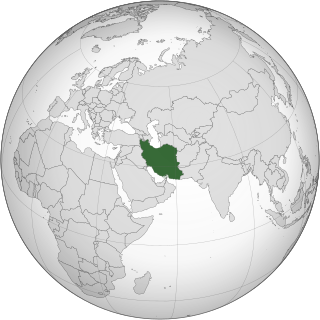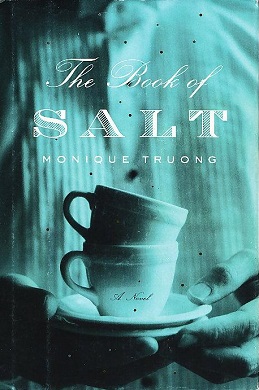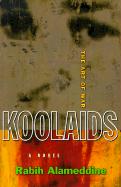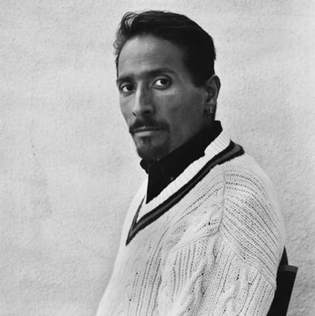Heterosexism is a system of attitudes, bias, and discrimination in favor of female–male sexuality and relationships. According to Elizabeth Cramer, it can include the belief that all people are or should be heterosexual and that heterosexual relationships are the only norm and therefore superior.

Gay men are male homosexuals. Some bisexual and homoromantic men may also dually identify as gay, and a number of young gay men also identify as queer. Historically, gay men have been referred to by a number of different terms, including inverts and uranians.

Lesbian, gay, bisexual and transgender (LGBT) people in Iran face severe legal challenges not experienced by non-LGBT residents. Sexual activity between members of the same sex is illegal and can be punishable by up to death, and people can legally change their assigned sex only through a sex reassignment surgery.
This article deals with writing that deals with LGBT themes in a Singapore context. It covers literary works of fiction, such as novels, short stories, plays and poems. It also includes non-fiction works, both scholarly and targeted at the general reader, such as dissertations, journal or magazine articles, books and even web-based content. Although Singapore lacks a dedicated gay book publisher or gay bookshop, it does have at least one dedicated gay library, Pelangi Pride Centre, which is open weekly to the public. Many of the works cited here may be found both in Pelangi Pride Centre, as well as the National Library or other academic libraries in Singapore, as well as in some commercial bookshops under 'gender studies' sections.

In comics, LGBT themes are a relatively new concept, as lesbian, gay, bisexual, and transgender (LGBT) themes and characters were historically omitted from the content of comic books and their comic strip predecessors due to anti-gay censorship. LGBT existence was included only via innuendo, subtext and inference. However the practice of hiding LGBT characters in the early part of the twentieth century evolved into open inclusion in the late twentieth and early twenty-first centuries, and comics explored the challenges of coming-out, societal discrimination, and personal and romantic relationships between gay characters.

AIDS and Its Metaphors is a 1989 work of critical theory by Susan Sontag. In this companion book to her Illness as Metaphor (1978), Sontag extends her arguments about the metaphors attributed to cancer to the AIDS crisis. Sontag explores how attitudes to disease are formed in society, and attempts to deconstruct them.

The Book of Salt is a 2003 debut novel by Vietnamese-American author Monique Truong.

Arthur J. Bressan Jr. was an American director, writer, producer, documentarian and gay pornographer, best known for pioneering independent queer cinema in the United States during the 1970s and 1980s. He wrote and directed the 1985 feature film Buddies, which was the first American film to grapple with the subject of the AIDS pandemic. Other directorial endeavors include the largely influential 1978 documentary Gay USA, and the 1983 feature film Abuse. He died on July 29, 1987, at the age of 44 due to an AIDS-related illness.
Richard Berkowitz is a gay American author and activist best known as an early advocate of safe sex in response to the AIDS crisis among gay men in the 1980s. The award-winning 2008 documentary Sex Positive directed by Daryl Wein is about his life and activities.

Koolaids: The Art of War is a novel by Rabih Alameddine, an author and painter who lives in both San Francisco and Beirut. He grew up in the Middle East, in Kuwait and Lebanon. Published in 1998, Koolaids is Alameddine's first novel. The majority of the story takes place in San Francisco and Beirut, the sites of two very different "wars". San Francisco from the mid-1980s into the 1990s is the main site of the AIDS epidemic, especially among the gay community, while Beirut is the site of a brutal civil war.

George Birimisa was an American playwright, actor, and theater director who contributed to gay theater during the 1960s, the early years of the Off-Off-Broadway movement.

And the Band Played On: Politics, People, and the AIDS Epidemic is a 1987 book by San Francisco Chronicle journalist Randy Shilts. The book chronicles the discovery and spread of the human immunodeficiency virus (HIV) and acquired immune deficiency syndrome (AIDS) with a special emphasis on government indifference and political infighting—specifically in the United States—to what was then perceived as a specifically gay disease. Shilts's premise is that AIDS was allowed to happen: while the disease is caused by a biological agent, incompetence and apathy toward those initially affected allowed its spread to become much worse.

Switzerland, a country which has long held a stance of neutrality in its relations with other nations, has not been immune to the movement of equality for lesbian, gay, bisexual and transgender citizens. Prior to the 20th century, sodomy and other types of sexual intercourse between people of the same sex was held in various levels of legal contempt. Today, the modern LGBT rights movement in Switzerland is related to the larger international movement which developed largely after 1969.
Initial events and trends in the discussion of HIV and AIDS in mass media contributed to the stigma and discrimination against those affected with the disease. Later discussion, sometimes led by HIV+ individuals themselves, moved toward advocacy and education on disease prevention and management. The UNESCO report on Journalism Education says, "Well researched television content can create public awareness about HIV prevention, treatment, care and support can potentially influence the development and implementation of relevant policies."

Gil Cuadros was an American gay poet, essayist, and ceramist known for his writing on the impact of AIDS.

The Christian tradition has generally proscribed any and all noncoital genital activities, whether engaged in by couples or individuals, regardless of whether they were of the same or different sex. The position of the Roman Catholic Church with regards to homosexuality developed from the writings of Paul the Apostle and the teachings of the Church Fathers. These were in stark contrast to contemporary Greek and Roman attitudes towards same-sex relations which were more relaxed.
The San Francisco model of AIDS care began in 1983 in wards 86 and 5B of San Francisco General Hospital. The focus of this model was not only on the health of each patient with AIDS, but also on the well-being of each person. As AIDS was beginning to be treated as a significant epidemic, San Francisco General Hospital recognized the need to create new standards of care for a disease that had never before been experienced. Compassionate care has now become a priority worldwide and an expected standard in hospitals as there places a greater emphasis on the social, psychological, and economic aspects of treatment in addition to the medicine.

The health access and health vulnerabilities experienced by the lesbian, gay, bisexual, transgender, queer or questioning, intersex, asexual (LGBTQIA) community in South Korea are influenced by the state's continuous failure to pass anti-discrimination laws that prohibit discrimination based on sexual orientation and gender identity. The construction and reinforcement of the South Korean national subject, "kungmin," and the basis of Confucianism and Christianity perpetuates heteronormativity, homophobia, discrimination, and harassment towards the LGBTQI community. The minority stress model can be used to explain the consequences of daily social stressors, like prejudice and discrimination, that sexual minorities face that result in a hostile social environment. Exposure to a hostile environment can lead to health disparities within the LGBTQI community, like higher rates of depression, suicide, suicide ideation, and health risk behavior. Korean public opinion and acceptance of the LGBTQI community have improved over the past two decades, but change has been slow, considering the increased opposition from Christian activist groups. In South Korea, obstacles to LGBTQI healthcare are characterized by discrimination, a lack of medical professionals and medical facilities trained to care for LGBTQI individuals, a lack of legal protection and regulation from governmental entities, and the lack of medical care coverage to provide for the health care needs of LGBTQI individuals. The presence of Korean LGBTQI organizations is a response to the lack of access to healthcare and human rights protection in South Korea. It is also important to note that research that focuses on Korean LGBTQI health access and vulnerabilities is limited in quantity and quality as pushback from the public and government continues.
Queer art, also known as LGBT+ art or queer aesthetics, broadly refers to modern and contemporary visual art practices that draw on lesbian, gay, bisexual, and transgender+ imagery and issues. While by definition there can be no singular "queer art", contemporary artists who identify their practices as queer often call upon "utopian and dystopian alternatives to the ordinary, adopt outlaw stances, embrace criminality and opacity, and forge unprecedented kinships and relationships." Queer art is also occasionally very much about sex and the embracing of unauthorised desires.

Carlos Jáuregui was an Argentine LGBT rights activist. He founded La Comunidad Homosexual Argentina in 1984. In the early 1990s, he set up Gays por los Derechos Civiles and organised the first Pride march in Buenos Aires. He died from an HIV-AIDS-related illness at the age of 38. In memorial, a national day of activism for sexual diversity was established. He was posthumously given the Felipa de Souza Award, and, in 2017, a station was renamed after him on the Buenos Aires Underground.














